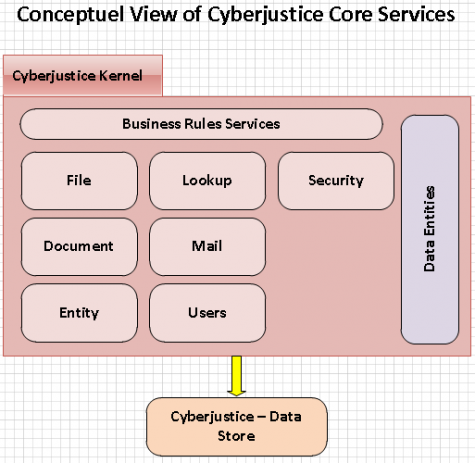Cyberjustice Core Services
The platform architecture has the following characteristics:
- separation of responsibilities among different components that are weakly dependent on one another (loose coupling);
- component specialization around a set of coherent responsibilities (strong cohesion);
- great component re-use potential;
- possibility of deploying, maintaining and updating different components independently;
- possibility of hosting the various components on different physical servers;
- well-defined interfaces with minimum interdependence;
- possibility of deploying the solution in different (heterogeneous) contexts while meeting the criteria for appropriate performance;
- easy verification and testing of the architecture to ensure application viability, smooth functioning and integrity.
The Laboratory has developed this platform on the basis of multitier architecture. It separates responsibilities into three major areas: the logic in the Cyberjustice platform, data permanence in the data storage tier, and application needs in the application tier.
The platform makes « Cyberjustice Core Services » available to consumer applications such as PARLe. The following illustration provides an overview of the services offered by the platform. They are grouped into components that fulfil the functions required in very specific fields. The pink boxes represent the principal platform components.

The software core comprises the set of classes necessary to support the platform services. Without going into all the details, the primary responsibility of each of these services will be at follows:
- File services: management of court and extra-judicial files;
- Document services: management of documents, attachments and envelopes;
- Entity services: management of courts of justice and organizations offering out-of-court services (such as administrative tribunals);
- Message services: sending of notification emails;
- User services: management of users;
- Security services: authorization management;
- Lookup services: reference and search services;
- Business rules services: application services adapted to the context.
The role of the “data entities” is to make it possible to exchange data among tiers. This function is achieved using the Entity Framework and LINQ framework applications.
The Cyberjustice data warehouse is a database that ensures the permanence of information processed by « Cyberjustice Core Services ».
This content has been updated on 01/11/2016 at 13 h 49 min.
